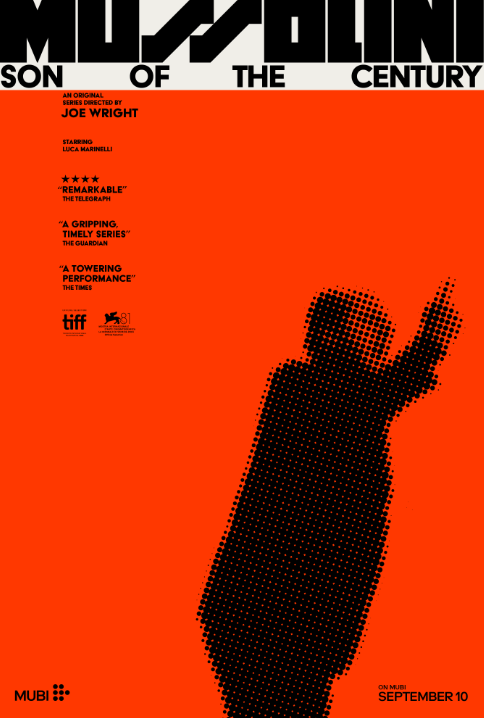From the 81st Venice Film Festival came a cinematic adaptation of the historical novel “M: Son of the Century” by Antonia Scurati. The eight part visual experience conjured up by Joe Wright tells the story of the overshadowed dictator Benito (Amilcare Andrea) Mussolini. “Mussolini: Son of the Century,” a titular adaptation, uses the same (and more) historical and biographical information to produce a well paced and accurate recounting of the tyrant’s rise to power.
The highly anticipated final episode will be released in North America this Wednesday, but the series initially aired on Sky Atlantic on Jan. 10 and was made available across Europe on various streaming services. With the acquisition of distribution rights for North America by British streaming platform MUBI in May of 2025, “Mussolini: Son of the Century” began airing Sept. 10 in America.
The series makes little attempt to break from its biographical roots; Unsurprisingly, this makes it all the more riveting. That being said, it’s no documentary. Historical media, predominantly film, along with historical evidence maintain a concrete historical timeline, and are the basis of the story. All else in between can be afforded to the directing, acting, writing, costuming, and excellent set design.
The series adopts a uniquely musical spin in story telling and action. Outside of standard background tracks, a vast majority of music heard can be traced to a definitive source, not just for the viewer’s ears, but alive and part of the story. From the first victims of Benito’s Black Shirts singing on through a flurry of violence, to the juxtaposed singing of those same Fascist thugs as they commit further acts of heinous violence, music is present throughout.
Perhaps the greatest triumph of “Mussolini: Son of the Century,” is that juxtaposition paints a moving picture of the essence of Mussolini and the essence of Fascism. There is no oblique exposé and statement of Mussolini’s evil, merely a faithful yet dramatic retelling of events surrounding him.
Throughout the episodes, action ranges from intense, brutal, raw, and violent to down right slapstick. Though this slapstick action never crosses the line to humor, it does provide a contrast in cinematography to highlight the violence of other action–actions which could easily be taken humorously, in all their crudeness, but instead hit just as vile as intended.
A crucial element, not to be overlooked in contemplating the work, is its limited historical time frame. “Mussolini: Son of the Century” tells the story of Mussolini and the rise of Fascism, but does not broach World War II or the Second Italio-Ethiopian War— both products of Fascism’s rise. The story begins with real footage of Mussolini’s demise and ends with the beginning of Mussolini’s dictatorial reign. It’s focused on telling a story, not making a spectacle. No detail feels wholly unnecessary.
In line with the saying ‘Show, Don’t Tell,’ “Mussolini: Son of the Century” doesn’t need to present you with heroes and villains; the villains are known from the very first second, and the heroes come later. The series drives home the message “How can the enemy, of my enemy, be my enemy?”, and ultimately lays clear a reality a hundred years removed: Fascism is only a few concessions away.



